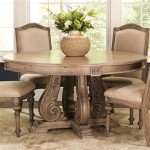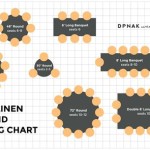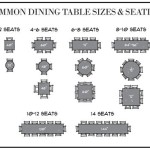Proper Use of Table Napkins in Schools and Colleges
The proper use of table napkins, often overlooked, is an essential component of etiquette and social grace. In educational settings such as schools and colleges, teaching and reinforcing this seemingly small detail can contribute significantly to the development of well-mannered and confident individuals. The purpose of this article is to provide a comprehensive guide to the correct and appropriate use of table napkins within the context of these learning environments.
Table manners, including napkin etiquette, are not merely about adhering to arbitrary rules. They reflect respect for oneself, for others present at the meal, and for the environment in which the meal is being shared. In schools and colleges, where students are actively shaping their identities and learning social skills, mastering these behaviors is crucial. Demonstrating proper etiquette can positively influence perceptions, foster better relationships, and create a more pleasant and respectful dining atmosphere.
Understanding the function, types, and appropriate handling of table napkins are essential for students to navigate various dining situations with confidence. This knowledge extends beyond formal settings and is valuable for everyday meals in cafeterias, dining halls, or even casual gatherings. Incorporating etiquette lessons into the curriculum or organizing workshops can equip students with the knowledge and skills needed to practice effective napkin etiquette.
Understanding the Purpose of a Table Napkin
The primary function of a table napkin is to protect clothing and maintain hygiene during a meal. It serves as a readily available tool to address spills, wipe fingers, and dab the mouth. The napkin's presence signals attentiveness to cleanliness and prevents the spread of germs. In educational institutions, modeling and emphasizing this practical function can discourage students from using less sanitary alternatives, such as sleeves or hands, to address messes.
In addition to its practical function, the table napkin also contributes to the overall aesthetic of the dining table. A neatly folded napkin, properly placed, adds a touch of formality and enhances the dining experience. It communicates a sense of care and consideration for the setting and the other diners. In schools and colleges, encouraging students to appreciate this aspect of napkin usage can promote a more refined and respectful approach to dining.
The napkin also serves as a visual cue to signal attentiveness and readiness to begin the meal. Placing the napkin in one's lap is a nonverbal indication that the diner is prepared to partake in the food. This subtle gesture helps to establish a structured and orderly dining environment, particularly beneficial in settings such as school cafeterias where large numbers of students are eating together.
Proper Placement and Handling of a Table Napkin
The correct placement of a table napkin is a simple yet essential aspect of dining etiquette. Upon being seated, the napkin should be unfolded and placed in the lap. This action signals that the diner is ready to begin eating. The size and type of napkin may influence how it is unfolded. A large napkin can be folded in half, while a smaller napkin can be fully unfolded. The primary goal is to have the napkin readily available for use throughout the meal.
If the napkin is particularly large or cumbersome, it is acceptable to fold it in half with the crease facing towards the body. This ensures that the napkin is manageable and will not inadvertently fall from the lap. In school and college dining environments, where the emphasis is on practicality and ease of use, this approach is often preferable.
When leaving the table temporarily during the meal, the napkin should be placed on the chair seat. This signals to the wait staff (or in a school setting, the dining hall staff) that the diner intends to return. Placing the napkin on the table indicates that the diner has finished eating. These simple conventions prevent confusion and ensure that the table is cleared appropriately.
The napkin should never be tucked into the collar or belt. This practice is considered impolite and can be perceived as childish or unsophisticated. Similarly, the napkin should not be used as a handkerchief or to wipe perspiration. These actions are considered unhygienic and inappropriate in a dining setting.
Correct Usage During and After the Meal
During the meal, the table napkin should be used discreetly to dab the mouth and wipe fingers. The napkin should be brought to the mouth, rather than bending down to meet the napkin. Small, gentle dabs are preferable to vigorous wiping. This approach ensures that the diner maintains a composed and refined demeanor throughout the meal.
If food is accidentally dropped or spilled, the napkin can be used to clean up the mess. The spill should be blotted gently, rather than rubbed, to prevent it from spreading further. If the spill is significant, it is appropriate to request assistance from the wait staff or dining hall staff.
When finished eating, the napkin should be loosely folded and placed to the left of the plate. This signals to the wait staff that the diner has completed the meal and the table can be cleared. The napkin should not be crumpled or tightly folded, as this can appear untidy and suggest dissatisfaction with the meal.
It is important to note that different cultures may have slightly different customs regarding napkin usage. However, the fundamental principles of cleanliness, respect, and consideration for others remain universal. In schools and colleges, it is beneficial to acknowledge these variations and encourage students to be mindful of cultural differences.
Furthermore, teaching students about sustainable practices related to napkin usage is increasingly relevant. Encouraging the use of cloth napkins, where possible, and promoting responsible disposal of paper napkins can contribute to environmental awareness and responsibility within the educational setting. This fosters a holistic approach to etiquette that encompasses both social grace and environmental consciousness.
Incorporating practical exercises and role-playing scenarios into etiquette lessons can enhance students' understanding and retention of proper napkin usage techniques. Simulating different dining situations allows students to practice these skills in a safe and supportive environment. This hands-on approach can build confidence and encourage students to apply these principles in real-world settings.
Ultimately, the proper use of table napkins in schools and colleges is about more than just following rules. It is about cultivating a sense of self-respect, respect for others, and attention to detail. By mastering these seemingly small gestures, students develop a foundation for confident and polished behavior that will serve them well throughout their lives. The consistent reinforcement of these practices within the educational environment contributes to the creation of a more civilized and respectful community.
The One Surprising Etiquette Rule You Didn T Know Were Breaking

Etiquipedia Etiquette And Napkin History

Etiquipedia Etiquette And Napkin History

Basic Dining Etiquette The Napkin 6 Of 16

How To Set A Table For Tea Party With Pictures Wikihow

How Often Should You Wash Cloth Napkins Epicurious

Etiquette Where To Place Your Cutlery When You Re Done Eating The Art Of Doing Stuff

Creative Hospitality How To Set A Formal Dinner Table

How To Fold Napkins With Rings 5 Fancy Napkin Folding Techniques For Your Thanksgiving Dinner Table

French Napkins David Lebovitz
Related Posts








